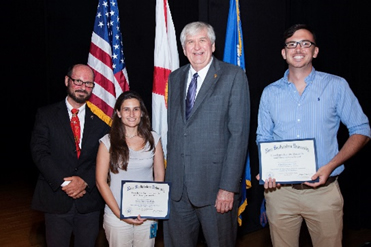Aquaculture of Giant Clams Tridacna Squamosa: the role of the symbiont
Grant Winners
- Joana Figueiredo, Ph.D. – Halmos College of Oceanography and Natural Sciences
- David Lawson, M.S. – Halmos College of Oceanography and Natural Sciences
Dean
- Richard Dodge, Ph.D. – Halmos College of Oceanography and Natural Sciences
Abstract

Fluted giant clams Tridacna squamosa are highly priced and in high demand in the ornamental aquarium trade across the United States. As a result, the natural stocks of this species in the South Pacific Ocean have been severely depleted. To ease the demands on wild collection, efforts have been made to farm this species. In their native range, clam culture can be done in the ocean, but in the U.S. these exotic clams would have to be cultured in captivity. The main challenge to their culture outside of the Indo-Pacific is the fact that these clams have an obligatory symbiosis with algae of the genus Symbiodinium; however the exact species of algae they associate with in their native range does not occur in Florida. Here we propose to assess if juvenile giant clams can establish symbiosis with Symbiodinium species common in Florida, and if this association can be facilitated by light irradiance levels experienced locally. To do so, we will rear juvenile giant clams under a combination of presence or absence of local Symbiodinium clades, and light irradiance that mimic Florida and Indonesia. We will use histological and genetic techniques to determine if the acquisition of local symbionts is possible. The effect of local clade presence and irradiance levels will be assessed on clam growth (shell length and weight) and photosynthetic efficiency of the symbionts. The establishment of an aquaculture protocol to culture Tridacna clams locally in an intensive aquaculture setting would minimize wild collection in their native habitats and ease pressure on these extremely distant farms, thus contributing to the conservation of the species and improving the local economy.